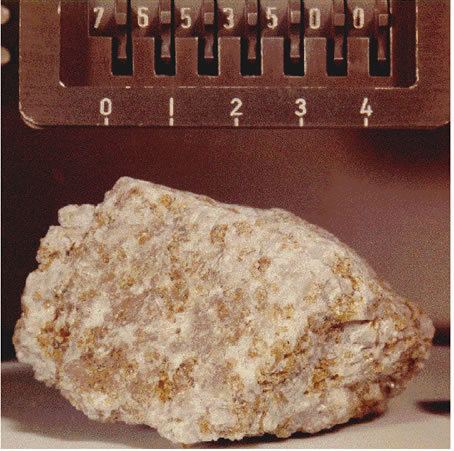 | ||
Troctolite 76535 is a lunar sample discovered and collected on the Apollo 17 mission in 1972 in the Taurus–Littrow valley. It has a mass of about 156 grams and is about 5 centimeters across at its widest point. It was collected as part of a "rake sample" of lunar soil at Geology Station 6, near the base of the North Massif.
Description
Troctolite 76535 is a coarse-grained plutonic rock that is believed to have had a slow cooling history. The rock originates from early in the Moon's history. Geologists have described it as a coarse-grained olivine-plagioclase cumulate with a granular polygonal texture.
Olivine and plagioclase are of about equal quantities within 76535, while the remaining approximate 4% is made up of primarily orthopyroxene. Studies have shown that the rock is plutonic in origin and originates from about the middle to lower crust of the Moon.
Investigations have shown that the rock may have formed as a cumulate at depth, thus possibly making the sample an important link in the understanding of the geologic timeline of the Moon.
As Troctolite 76535 is the oldest known unshocked lunar rock, it has been used for thermochronological calculations in order to determine whether the Moon formed a metallic core or generated a core dynamo. The results of these studies have been shown to support the core dynamo hypothesis.
According to some studies, 76535 shows evidence of having cooled slowly at a depth of about 10-20 kilometers (6.21-12.43 mi), as well as reequilibration and annealing.
Troctolite 76535 has been called the most interesting sample returned from the Moon.
